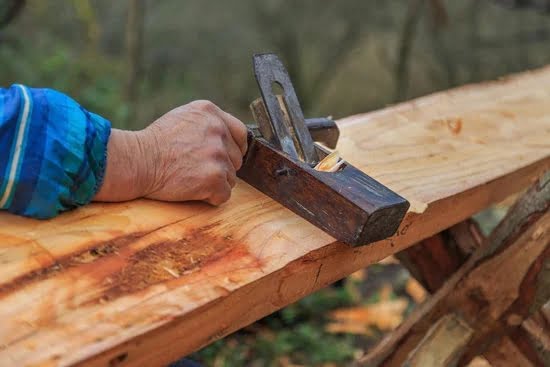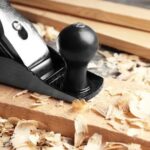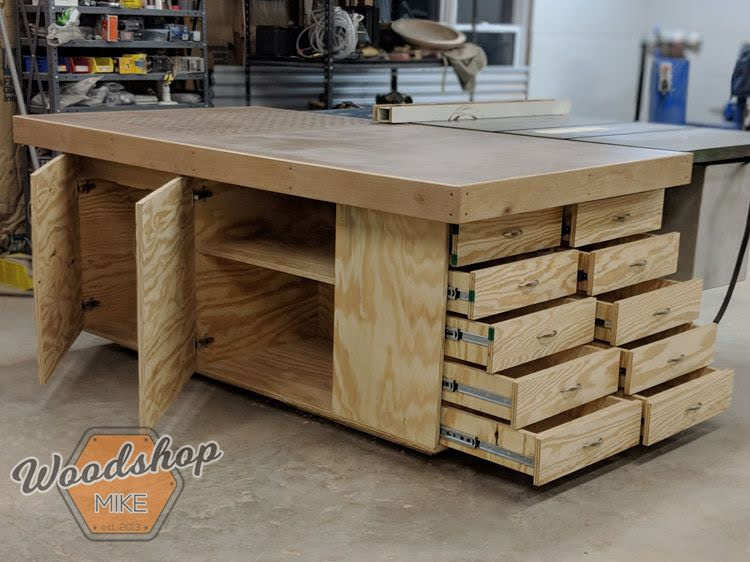Are you struggling with uneven table legs in your woodworking projects? Learning how to level table legs is a crucial skill that can make a significant difference in the quality and stability of your furniture. In this article, we will delve into the importance of having level table legs in woodworking, as well as provide you with a comprehensive guide on how to achieve this essential aspect of furniture-making.
Uneven table legs can not only compromise the aesthetics of your furniture but also affect its functionality and stability. Whether you are working on a simple side table or a more elaborate dining table, ensuring that all four legs are level is paramount. Understanding the significance of this aspect in woodworking will help you produce high-quality, durable furniture that stands the test of time.
In the following sections, we will discuss common issues that arise from uneven table legs, highlight safety precautions when working with table legs, provide a step-by-step guide to assessing and identifying which table legs need leveling, list the necessary tools and materials for the job, and offer detailed instructions on how to level table legs in woodworking.
Additionally, we will share extra tips and tricks for achieving perfect table leg leveling and provide guidance on final touches for ensuring longevity and stability.
So let’s get started on mastering this fundamental skill in woodworking.
Common Issues
Uneven table legs can create a myriad of issues and frustrations for woodworkers. One of the most obvious problems is that a table with uneven legs will not sit level, causing instability and wobbling.
This can be particularly problematic if the table is being used to hold heavy items, as it increases the risk of tipping or damage to the items on the table. Additionally, uneven table legs can also lead to an unsightly and unprofessional appearance, detracting from the overall craftsmanship of a woodworking project.
Another common issue resulting from uneven table legs is an increased risk of accidents or injuries. If a table is not stable due to uneven legs, it may pose a hazard to anyone using or passing by it.
Accidentally bumping into the table could cause items to fall off and break, or even result in the whole table tipping over. In a professional woodworking setting, this could also lead to liability concerns if someone were to get injured due to unstable furniture.
Furthermore, uneven table legs can have negative effects on the longevity of the furniture. When a table is constantly wobbling due to uneven legs, it puts extra stress on its joints and connections. Over time, this added stress can cause premature wear and tear on the table’s structure, potentially leading to loose or broken components.
| Issue | Potential Problem |
|---|---|
| Instability | Risk of tipping over and damage to items on the table |
| Hazard | Possible injuries from unstable furniture |
| Longevity | Premature wear and tear on the table’s structure |
Safety Precautions
Working with table legs in woodworking can present some safety hazards, so it’s important to take the necessary precautions to ensure a safe working environment. Whether you are adjusting the height of the legs or re-leveling them, it’s essential to prioritize safety throughout the process.
Protective Gear
Before you begin any work on your table legs, make sure to wear appropriate protective gear such as safety goggles, gloves, and closed-toe shoes. These items will help protect your eyes, hands, and feet from potential injuries caused by wood splinters, sharp edges, or falling objects.
Stability of Work Area
When working with table legs, it’s crucial to have a stable and clutter-free work area. Ensure that your workbench or table is sturdy and level to avoid accidents or injuries. Additionally, keep the work area clean and free from any obstacles that could cause tripping or slipping hazards.
Proper Tool Use
Use tools properly and according to their intended purpose. Avoid makeshift tools or using tools in ways for which they were not designed. This includes making sure that any power tools are in good working condition and have all safety guards in place. Always follow manufacturer instructions and guidelines for safe use of tools when leveling table legs.
By following these safety precautions, you can create a safer woodworking environment for leveling table legs while minimizing the risk of accidents and injuries. Taking these steps will allow you to focus on the task at hand and achieve optimal results without compromising your personal well-being. Remember: prioritizing safety is essential for a successful woodworking project.
Assessing the Problem
When working on a woodworking project, ensuring that the table legs are level is crucial for the stability and functionality of the final piece. Uneven table legs can result in wobbling, instability, and even potential safety hazards. Before starting the process of leveling, it’s important to assess which table legs need attention.
Here is a step-by-step guide to help you assess and identify which table legs need leveling:
1. Visual Inspection: Begin by visually inspecting each table leg to check for any obvious signs of unevenness. Look for gaps between the legs and the floor or any noticeable wobbling when pressure is applied.
2. Using a Level: Utilize a carpenter’s level to determine if any of the table legs are not parallel with the ground surface. Place the level on top of each table leg and observe if it indicates any imbalance.
3. Testing Stability: Test the stability of the table by gently pushing down on each corner to see if there is any rocking motion. This can help identify which specific legs may need adjustments.
By carefully following these steps, you will be able to accurately identify which table legs require leveling before moving on to the next phase of the woodworking project.
For more advanced assessment methods, such as measuring exact angles or utilizing specialized tools like shims, consult with experienced woodworkers or professionals in order to ensure precise leveling results.
Remember that proper assessment is crucial for successful leveling of table legs in woodworking projects.
Tools and Materials
When it comes to leveling table legs in woodworking, having the right tools and materials is essential to achieving a stable and balanced finished product. Here, we will discuss the necessary items needed for this task.
One of the most important tools for leveling table legs is a good quality level. This tool will help you accurately determine which table legs are uneven and need adjustment. A tape measure is also crucial for taking precise measurements, ensuring that all legs are cut to the correct length for evenness.
In addition to these basic tools, you may also need shims or adjustable leg levelers to make fine adjustments to the height of each leg. These can be especially useful for tables that will be placed on uneven surfaces. Other common materials include wood glue (if repairs are needed), sandpaper for smoothing any rough edges, and a pencil for marking measurements during the process.
| Tools | Materials |
|---|---|
| Level | Shims |
| Tape Measure | Wood Glue |
| Sandpaper | Pencil |
Step-by-Step Process
Leveling table legs in woodworking is an essential step to ensure stability and balance in the final piece. Uneven table legs can result in wobbling, instability, and potential safety hazards. Here is a step-by-step guide on how to properly level table legs in woodworking:
1. Identify the Problem: Start by placing the table on a flat surface and checking for any wobbling or unevenness. Use a level to determine which legs need adjusting.
2. Prepare the Work Area: Clear the area around the table and ensure that it is stable and secure. This will prevent any accidents while working on the table legs.
3. Adjust Leg Height: Depending on the type of table legs, use adjustable feet or shims to raise or lower the legs as needed. Take measurements to ensure that all legs are at the desired height.
4. Test for Stability: Once you have made adjustments to the table legs, test the stability by placing a level on the tabletop and checking for any wobbling or unevenness. Make further adjustments if necessary until all legs are level.
5. Secure Legs: Once satisfied with the leveling of the table legs, secure them in place using appropriate hardware or locking mechanisms to prevent any future shifts in position.
By following these steps, you can ensure that your woodworking project has stable and perfectly leveled table legs, enhancing both its functionality and aesthetic appeal.
Additional Tips:
– Double-check your measurements and adjustments before securing the table legs in place.
– Consider using self-leveling glides for added convenience in adjusting leg height.
– Regularly inspect and maintain your table legs to ensure long-term stability and balance.
With these detailed instructions and additional tips, you can effectively level table legs in woodworking projects with confidence and precision.
Tips and Tricks
When it comes to achieving perfect table leg leveling in woodworking, there are always some additional tips and tricks that can make the process even smoother. In this section, we will explore some of the best practices for ensuring that your table legs are perfectly level, providing stability and longevity to your woodworking projects.
Using Shims
One of the most effective ways to level table legs is by using shims. Shims are thin pieces of material that can be inserted under the table leg to raise its height and achieve a level surface. When using shims, it’s important to ensure that they are properly secured in place to prevent any wobbling or instability in the future.
Adjustable Leveling Feet
Another great option for leveling table legs is to use adjustable leveling feet. These feet allow you to easily adjust the height of each table leg individually, giving you precise control over the leveling process. Adjustable leveling feet can be a great solution for tables that will be placed on uneven surfaces or need frequent adjustments.
Double-Check With a Spirit Level
After following the step-by-step process for leveling table legs, it’s always a good idea to double-check your work using a spirit level. This tool will help you ensure that each leg is perfectly level and eliminate any margin of error. By taking the time to double-check with a spirit level, you can be confident that your table legs are truly level and stable.
By incorporating these additional tips and tricks into your woodworking process, you can ensure that your table legs are perfectly leveled, providing stability and durability to your finished projects. Whether you choose to use shims, adjustable leveling feet, or simply double-check with a spirit level, these techniques will help you achieve professional-level results in your woodworking endeavors.
Finishing Touch
After completing the leveling process for your table legs, there are a few final touches you can add to ensure the longevity and stability of the legs. These finishing touches will not only enhance the overall look of your woodworking project but also contribute to the durability of the table legs.
One important step in finishing off your leveled table legs is to protect them from moisture and other environmental factors that may cause damage over time. Applying a sealant or wood finish will help prevent warping, rotting, or cracking, especially if the table will be placed outdoors or in high-humidity areas. Be sure to choose a sealant that is compatible with the type of wood used for your table legs.
Another way to ensure the stability of your table legs is by adding protective pads or caps to the bottom of each leg. This will not only prevent scratches on the floor but also provide an extra layer of support and grip, reducing the risk of wobbling or unevenness. Whether you choose adhesive felt pads or screw-on rubber caps, these additions can make a significant difference in maintaining the stability of your table.
In addition to protective measures, consider adding decorative elements such as trim or molding to give your table legs a polished and professional look. This can be done using woodworking tools such as a router or chisel to create intricate designs that complement the overall style of your woodworking project. Taking these extra steps in finishing off your leveled table legs will not only improve their appearance but also contribute to their overall strength and stability.
Conclusion
In conclusion, ensuring the proper leveling of table legs is essential in woodworking for several reasons. From providing stability and balance to preventing wobbling and potential accidents, level table legs are crucial for the functionality and safety of furniture. As discussed in this article, common issues arising from uneven table legs can lead to problems such as rocking or instability, which not only affects the aesthetics of the piece but also compromises its usability.
Moreover, it’s important to emphasize the significance of safety precautions when working with table legs. Whether using hand tools or power tools for leveling, woodworkers should always prioritize safety to avoid any potential injuries. Additionally, properly assessing the problem and using the necessary tools and materials are crucial steps in achieving successful table leg leveling. This includes using a level, shims, and various woodworking tools to ensure precise adjustments.
Overall, following a step-by-step process alongside tips and tricks can help woodworkers effectively level table legs with accuracy and precision. By giving attention to detail during this process, individuals can achieve professional results that enhance the overall quality of their woodworking projects.
Ultimately, proper table leg leveling contributes not only to the aesthetics but also to the functionality and longevity of furniture pieces. With these considerations in mind, woodworkers can confidently tackle any uneven table leg issue they encounter in their projects.
Frequently Asked Questions
How Do You Fix an Uneven Table Leg?
Fixing an uneven table leg can be as simple as placing a shim, such as a small piece of wood or cardboard, under the shorter leg. Alternatively, you could adjust the length of the leg by adding or removing adjustable feet if the table has them.
How Do You Level Legs on Furniture?
When it comes to leveling legs on furniture, there are several methods that can be used. One common approach is to use adjustable feet or levelers to raise or lower the legs as needed. Another method involves placing shims or felt pads under the shorter legs to even them out.
How Do You Level the Legs on a Small Table?
Leveling the legs on a small table can be done using similar methods to larger furniture. This may include adjusting adjustable feet if present, adding shims under the shorter legs, or even using adhesive felt pads to create better stability and balance.
Regardless of the specific method chosen, it is important to ensure that all four legs make solid contact with the ground and that they are adjusted to achieve stability and balance.

Hi everyone! I’m a woodworker and blogger, and this is my woodworking blog. In my blog, I share tips and tricks for woodworkers of all skill levels, as well as project ideas that you can try yourself.





